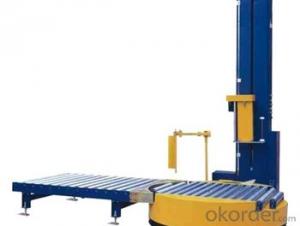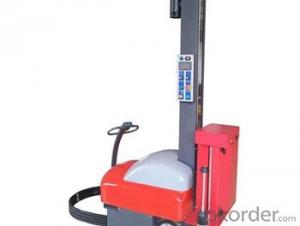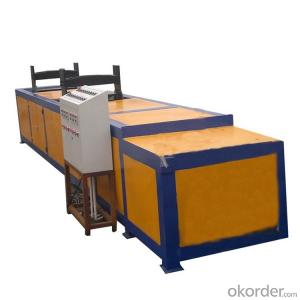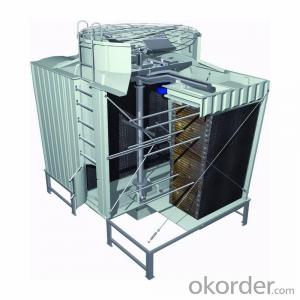FRP Pultruded Grating with Excellent electromagnetism property of lastest styles on sales
- Loading Port:
- Tianjin
- Payment Terms:
- TT OR LC
- Min Order Qty:
- 55 m.t.
- Supply Capability:
- 50000 m.t./month
OKorder Service Pledge
OKorder Financial Service
You Might Also Like
Item specifice
COMPANT DESCRIPTION
CNBM,China National Building Materials Group is a state-owned enterprise in charge of administrative affairs in china building materials industry. Established in 1984, CNBM is a large group corporation of building materials with total assets of 25 billion RMB and a total staff of 30,000.CNBM now owns 200 subordinating firms of solely owned and joint-venture companies.
CNBM International Corporation is one subsidiary of CNBM, we focus on offering good-quality products,professional service and complete solution to our customers. Strong delivery capacity, advanced technology& management, strong financing capability and excellent after-sale service are our advantages in sharing international market.
FEATURES
a. Anti-corrosion and anti-rust
b. Light weight and high strength
c. Anti-flammable
d. Anti- fatigue
e. Safe and anti-slippery
f. Anti-ageing
g. Easy of maintenance
h. Excellent electromagnetism property
i. Good economic benefit
APPLICATION
Operation terrace,
stair walkway,
ground floor,
trench cover,
sidewalk,
foot bridge,
equipment safety fence,
scaffold
TECHNICAL DATA
Thickness (mm) | Bar width (mm) | Open space (mm) | Open rate (%) | Approx weight (kg/m |
25.4 | 15.2 | 22.8 | 60 | 13.2 |
25.4 | 15.2 | 15.2 | 50 | 15.9 |
25.4 | 15.2 | 10.1 | 40 | 18.5 |
25.4 | 40 | 10.8 | 21 | 14.5 |
38.1 | 15.2 | 22.8 | 60 | 15.8 |
38.1 | 15.2 | 15.2 | 50 | 19.1 |
38.1 | 15.2 | 10.1 | 40 | 22.4 |
IMAGES DETAILED

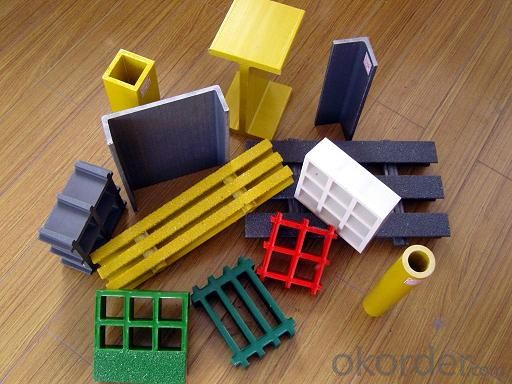
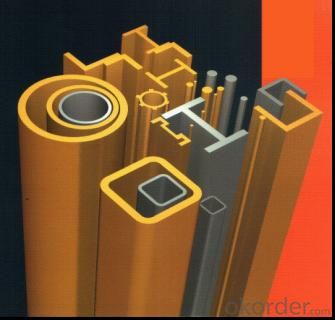
- Q:Are FRP pultrusion profiles impact resistant?
- Yes, FRP (Fiber Reinforced Polymer) pultrusion profiles are generally known for their high impact resistance. The combination of reinforcing fibers, such as glass or carbon, with a polymer matrix results in a material that is inherently strong and durable. The pultrusion process further enhances the impact resistance of these profiles by aligning the fibers in the direction of the load, providing optimal strength against impacts. FRP pultrusion profiles also have a high strength-to-weight ratio, which allows them to withstand heavy impacts without significant damage or deformation. This makes them suitable for applications where impact resistance is crucial, such as in construction, transportation, and infrastructure projects. Moreover, FRP pultrusion profiles offer excellent resistance against corrosion, chemicals, and UV radiation, which further contribute to their durability and long-term performance. These profiles can maintain their impact resistance properties even in harsh environments, making them a preferred choice for various industries. However, it is important to note that the specific impact resistance of FRP pultrusion profiles may vary depending on the specific design, composition, and manufacturing process. Therefore, it is recommended to consult with the manufacturer or supplier to ensure the profiles meet the desired impact resistance requirements for a particular application.
- Q:Can FRP pultrusion profiles be used in the construction of chemical processing equipment?
- Yes, FRP (Fiber Reinforced Plastic) pultrusion profiles can be used in the construction of chemical processing equipment. FRP offers excellent resistance to corrosion, chemicals, and high temperatures, making it a suitable material for such applications. The pultrusion process ensures that the profiles are strong, durable, and have consistent properties, making them reliable for use in chemical processing equipment where resistance to corrosive substances is crucial.
- Q:Are FRP pultrusion profiles resistant to chemicals used in power plants?
- Yes, FRP pultrusion profiles are highly resistant to chemicals commonly used in power plants. The composite materials used in their construction, such as fiberglass and resin, offer excellent resistance to corrosion and chemical attack. This makes FRP pultrusion profiles a durable and reliable choice for various applications in power plants, including structural components and equipment.
- Q:Are FRP pultrusion profiles resistant to termites or other pests?
- Yes, FRP (Fiber Reinforced Polymer) pultrusion profiles are inherently resistant to termites and other pests. Unlike traditional wood or metal materials, FRP profiles do not provide a food source for termites or any other pests. FRP is composed of a combination of reinforced fibers and a polymer matrix, typically made of fiberglass and resin. These materials are not appealing to pests and do not provide any nutritional value, making FRP profiles highly resistant to termite damage or infestation. This resistance to pests is one of the many advantages of using FRP pultrusion profiles in various applications, especially in outdoor or humid environments where termites are commonly found.
- Q:Are FRP pultrusion profiles resistant to mold and mildew?
- FRP pultrusion profiles are known for their ability to resist mold and mildew. Made from a composite material consisting of a reinforced polymer matrix with fibers, usually glass fibers, FRP is unlike organic materials like wood or traditional plastics because it does not create a suitable environment for mold and mildew to thrive. The properties inherent in FRP, such as its non-porous nature and resistance to moisture absorption, contribute to its exceptional resistance to mold and mildew. Moreover, FRP pultrusion profiles are often manufactured with a smooth and glossy surface, further discouraging the growth of mold and mildew. In addition, FRP is chemically inert, meaning it does not react with most substances. This quality makes FRP profiles highly resistant to chemical attacks that could promote the growth of mold and mildew. Consequently, FRP pultrusions are frequently utilized in environments with high moisture and humidity levels, including bathrooms, swimming pools, and outdoor applications. Nevertheless, it is crucial to recognize that while FRP is resistant to mold and mildew, it is not entirely impervious. In extreme conditions where moisture levels remain consistently high and proper maintenance is neglected, there is still a possibility of mold and mildew growth. To ensure the longevity and resistance of FRP pultrusion profiles to mold and mildew, regular cleaning and maintenance are recommended.
- Q:Are FRP pultrusion profiles resistant to nitric acid?
- FRP pultrusion profiles are generally resistant to nitric acid. Nitric acid is a strong oxidizing agent and can corrode many materials including metals. However, FRP (Fiber Reinforced Polymer) pultrusion profiles are made of composite materials that are specifically designed to be resistant to various corrosive substances, including nitric acid. The corrosion resistance of FRP pultrusion profiles can be attributed to the combination of their reinforcing fibers, such as fiberglass or carbon fiber, and the resin matrix that binds these fibers together. The resin matrix used in FRP profiles is typically a thermosetting polymer, such as polyester or epoxy, which provides a protective barrier against corrosive substances. Nitric acid is known to attack metals, causing corrosion and degradation. However, FRP pultrusion profiles offer excellent resistance to nitric acid due to the inert nature of the composite materials used. The reinforcing fibers in FRP profiles do not react with nitric acid, and the resin matrix acts as a barrier, preventing the acid from reaching and corroding the fibers. It is important to note that the specific resistance of FRP pultrusion profiles to nitric acid may vary depending on the specific composition of the composite materials used and the concentration and temperature of the nitric acid. Therefore, it is always recommended to consult with the manufacturer or supplier of FRP profiles to ensure their compatibility with nitric acid in specific applications.
- Q:What are the typical applications for FRP pultrusion profiles?
- FRP (Fiber Reinforced Plastic) pultrusion profiles find a wide range of applications across various industries. One of the most common uses is in the construction industry, where these profiles are used for structural components such as beams, columns, and platforms. They offer high strength-to-weight ratio, corrosion resistance, and durability, making them ideal for building infrastructure that requires long-lasting, low-maintenance solutions. In the transportation sector, FRP pultrusion profiles are used for manufacturing lightweight components like bus and truck bodies, railcar panels, and wind turbine blades. Their lightweight nature helps reduce fuel consumption and increase energy efficiency. Moreover, their resistance to chemicals, moisture, and UV radiation ensures their longevity even in harsh operating environments. In the electrical and power distribution field, FRP pultrusion profiles are utilized for manufacturing insulating supports, cable trays, and ladder racks. These profiles provide excellent electrical insulation properties, making them a safe and reliable choice for electrical installations. Additionally, their non-conductive nature helps prevent electrical accidents and eliminates the risk of electric shock. FRP pultrusion profiles also find applications in the marine industry, where their resistance to saltwater corrosion makes them suitable for manufacturing boat hulls, decks, and other marine components. Their high strength and stiffness make them capable of withstanding the harsh conditions of the marine environment. Furthermore, FRP pultrusion profiles are used in the chemical processing industry for manufacturing tanks, pipes, and platforms. Their resistance to various chemicals and corrosive substances ensures the integrity of the equipment and enhances safety in chemical plants. Overall, the typical applications for FRP pultrusion profiles span across industries such as construction, transportation, electrical, marine, and chemical processing. Their unique properties make them a versatile and reliable choice for various structural and functional applications.
- Q:How do FRP pultrusion profiles perform in high humidity environments?
- FRP pultrusion profiles perform exceptionally well in high humidity environments. The fiberglass reinforcement in the profiles provides excellent resistance to moisture absorption, preventing any adverse effects on their structural integrity. This makes them highly durable and suitable for long-term use in humid conditions without any significant degradation or damage.
- Q:Are FRP pultrusion profiles resistant to impact?
- Yes, FRP (Fiber Reinforced Polymer) pultrusion profiles are generally resistant to impact. The combination of the high-strength fibers and the polymer matrix used in the manufacturing process makes FRP profiles highly durable and able to withstand significant impacts without cracking or breaking. Additionally, the pultrusion process ensures that the fibers are uniformly distributed throughout the profile, further enhancing its impact resistance. This makes FRP pultrusion profiles ideal for applications where impact resistance is important, such as in construction, transportation, and infrastructure projects.
- Q:Are FRP pultrusion profiles resistant to corrosion and chemicals?
- Yes, FRP pultrusion profiles are highly resistant to corrosion and chemicals. This is due to the inherent properties of the fiberglass reinforced plastic material, which is non-reactive and does not corrode or deteriorate when exposed to various chemicals or harsh environmental conditions. Additionally, the pultrusion manufacturing process ensures a uniform and consistent distribution of the reinforcing fibers, further enhancing their resistance to corrosion and chemicals.
1. Manufacturer Overview |
|
|---|---|
| Location | |
| Year Established | |
| Annual Output Value | |
| Main Markets | |
| Company Certifications | |
2. Manufacturer Certificates |
|
|---|---|
| a) Certification Name | |
| Range | |
| Reference | |
| Validity Period | |
3. Manufacturer Capability |
|
|---|---|
| a)Trade Capacity | |
| Nearest Port | |
| Export Percentage | |
| No.of Employees in Trade Department | |
| Language Spoken: | |
| b)Factory Information | |
| Factory Size: | |
| No. of Production Lines | |
| Contract Manufacturing | |
| Product Price Range | |
Send your message to us
FRP Pultruded Grating with Excellent electromagnetism property of lastest styles on sales
- Loading Port:
- Tianjin
- Payment Terms:
- TT OR LC
- Min Order Qty:
- 55 m.t.
- Supply Capability:
- 50000 m.t./month
OKorder Service Pledge
OKorder Financial Service
Similar products
New products
Hot products
Related keywords
